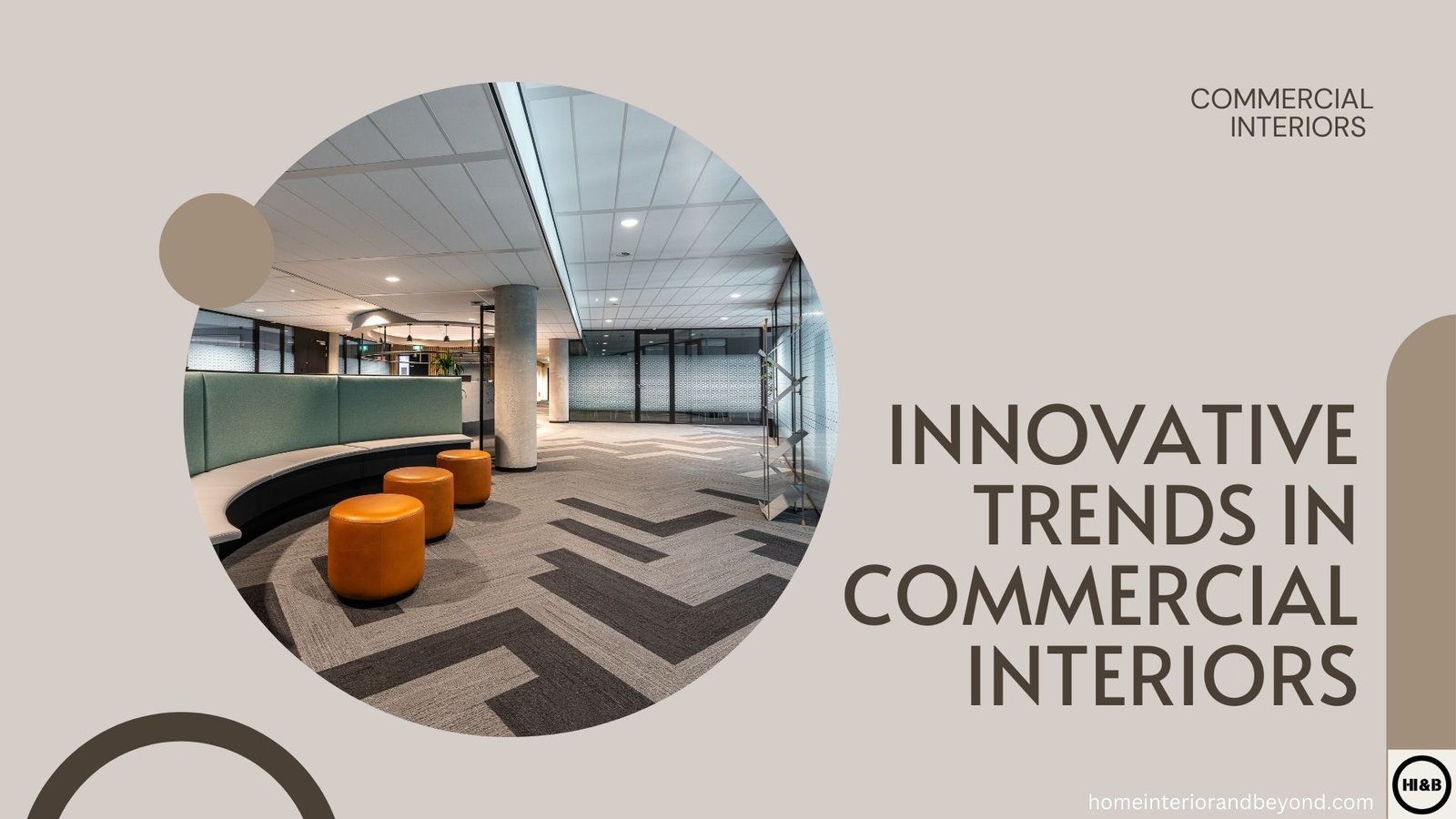Introduction
As the landscape of work continues to evolve, so do the interiors of our commercial spaces. The way we design these environments can significantly impact productivity, collaboration, and overall employee well-being. In this blog, we explore some of the most innovative trends in commercial interiors that are shaping the future of workspaces, helping businesses create functional yet aesthetically pleasing environments.

Captivating Headlines for Each Trend
1. Flexible Spaces: Adaptable Designs for Dynamic Teams
Gone are the days of rigid office layouts. Flexible spaces are becoming the norm, allowing businesses to adapt their environments to meet the ever-changing needs of their teams. Modular furniture, movable walls, and multifunctional areas are key components of this trend, fostering collaboration while providing private spaces when necessary.
Key Points:
- Modular furniture and movable walls.
- Encourages collaboration and privacy.
2. Biophilic Design: Bringing the Outdoors Inside
Integrating nature into the workspace is more than just a design choice; it’s a way to enhance employee well-being. Biophilic design emphasizes natural light, plant life, and organic materials, creating a serene atmosphere that reduces stress and boosts productivity. This trend not only improves air quality but also connects employees to their natural surroundings.
Key Points:
- Use of natural light and plant life.
- Enhances well-being and reduces stress.
3. Technology-Driven Spaces: Smart Interiors for a Modern Workforce
With advancements in technology, commercial interiors are becoming smarter. From automated lighting and climate control to integrated audio-visual systems, technology is enhancing the functionality of workspaces. Smart interiors not only streamline operations but also provide an engaging environment for employees, making their work experience more enjoyable.
Key Points:
- Automated lighting and climate control.
- Engaging environments for employees.

4. Sustainable Practices: Eco-Friendly Design Solutions
Sustainability is at the forefront of commercial interior design trends. Businesses are increasingly opting for eco-friendly materials, energy-efficient lighting, and sustainable practices to reduce their carbon footprint. Implementing green design solutions not only benefits the environment but also resonates with employees and clients who value corporate responsibility.
Key Points:
- Use of sustainable materials.
- Reduces carbon footprint and boosts corporate responsibility.
5. Personalized Workspaces: Individual Touches for Employee Comfort
Every employee is unique, and so are their workspace needs. Personalized workspaces allow individuals to customize their environment, from choosing desk arrangements to selecting decorative elements. This trend fosters a sense of ownership and belonging, leading to higher job satisfaction and increased productivity.
Key Points:
- Allows for personal touches and choices.
- Increases job satisfaction and productivity.
Conclusion
The future of commercial interiors is being shaped by innovative trends that prioritize flexibility, well-being, technology, sustainability, and personalization. By embracing these design principles, businesses can create environments that not only enhance productivity but also reflect their brand identity. As we move forward, the importance of thoughtful interior design in Chennai for homes and commercial interiors cannot be overstated.
Call to Action
Are you ready to transform your workspace into an innovative environment that fosters creativity and collaboration? Contact us today to explore how we can help you design the perfect commercial interior for your business!
FAQs
1: What are the key benefits of flexible workspace design?
A: Flexible workspace design promotes adaptability, encourages collaboration, and enhances employee satisfaction by allowing teams to work in environments that suit their needs.
2: How does biophilic design impact employee productivity?
A: Biophilic design has been shown to reduce stress, improve mood, and increase focus, leading to higher productivity levels among employees.
3: What technologies are commonly used in smart interiors?
A: Common technologies in smart interiors include automated lighting systems, climate control, integrated audio-visual setups, and advanced security features.
4: How can businesses implement sustainable practices in their interior design?
A: Businesses can implement sustainable practices by choosing eco-friendly materials, using energy-efficient lighting, and incorporating natural elements into their designs.
5: Why is personalization important in commercial interiors?
A: Personalization fosters a sense of ownership and comfort among employees, leading to increased job satisfaction and productivity.




